Java方向(SSM+SpringBoot)项目实训Day14-SpringBoot(新闻管理系统)shiro配置+权限管理+微服务
Day14-SpringBoot(新闻管理系统)shiro配置+权限管理+微服务
- shiro配置
- 权限管理
- 微服务(Spring Cloud)
-
- Provider Module
- Consumer Module
- EurekaServer
Java方向(SSM+SpringBoot)项目实训
Day14(2020.8.4)
shiro配置
安全框架:
shiro对比spring security,更加简易,容易上手,轻巧灵活,实用;
spring security则太庞大、复杂。
利用shiro做一个简单的角色权限管理:
页面不做角色管理模块,而是对数据库中一个表进行添加;
1.po下创建Role实体类;

Role中添加:
@Entity
@Table(name = "t_role")
public class Role implements Serializable {
private static final long serialVersionUID = -2608765352170228939L;
@Id
@GeneratedValue(strategy = GenerationType.IDENTITY)
private Long id;
private String name;
private String description;
@ManyToMany(mappedBy = "roles")
private Set<User> users = new HashSet<>(0);
@ManyToMany(fetch = FetchType.EAGER)
private Set<Permission> permissions = new HashSet<>(0);
public static long getSerialVersionUID() {
return serialVersionUID;
}
public Long getId() {
return id;
}
public void setId(Long id) {
this.id = id;
}
public String getName() {
return name;
}
public void setName(String name) {
this.name = name;
}
public String getDescription() {
return description;
}
public void setDescription(String description) {
this.description = description;
}
public Set<User> getUsers() {
return users;
}
public void setUsers(Set<User> users) {
this.users = users;
}
public Set<Permission> getPermissions() {
return permissions;
}
public void setPermissions(Set<Permission> permissions) {
this.permissions = permissions;
}
}
2.修改User实体类;
User中添加:
@ManyToMany(fetch = FetchType.EAGER)
private Set<Role> roles = new HashSet<>(0);
public Set<Role> getRoles() {
return roles;
}
public void setRoles(Set<Role> roles) {
this.roles = roles;
}
3.po下创建Permission实体类;

Permission中添加:
@Entity
@Table(name = "t_permission")
public class Permission implements Serializable {
private static final long serialVersionUID = -6266065191284242266L;
@Id
@GeneratedValue(strategy = GenerationType.IDENTITY)
private Long id;
private String name;
private String code;
private String description;
public static long getSerialVersionUID() {
return serialVersionUID;
}
public Long getId() {
return id;
}
public void setId(Long id) {
this.id = id;
}
public String getName() {
return name;
}
public void setName(String name) {
this.name = name;
}
public String getCode() {
return code;
}
public void setCode(String code) {
this.code = code;
}
public String getDescription() {
return description;
}
public void setDescription(String description) {
this.description = description;
}
}
4.shiro请求realm里存有安全的数据源进行认证授权,pom.xml导入shiro所需要的依赖;
pom.xml中添加:
<dependency>
<groupId>org.apache.shiro</groupId>
<artifactId>shiro-core</artifactId>
<version>1.3.2</version>
</dependency>
<dependency>
<groupId>org.apache.shiro</groupId>
<artifactId>shiro-spring</artifactId>
<version>1.3.2</version>
</dependency>
然后点击右侧边栏Maven中的刷新,进行下载添加所需要的shiro依赖;
5.实体类Role和Permission中的Id序列化设置;
File→Settings→

→Apply;
实体类Role中;
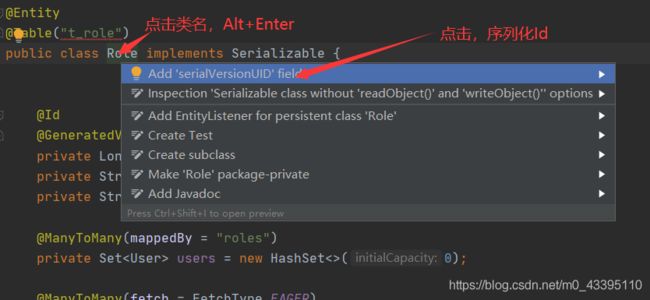
并且添加Getter方法;
public static long getSerialVersionUID() {
return serialVersionUID;
}

实体类Permission中,重复上述方法对其Id进行序列化;
6.news下创建realm包下创建NewsRealm类;

NewsRealm中添加:
public class NewsRealm extends AuthorizingRealm {
public void setName(String name){
setName("newsRealm");}
@Autowired
private UserService userService;
@Override
protected AuthorizationInfo doGetAuthorizationInfo(PrincipalCollection principalCollection) {
//获取认证的用户数据
User user = (User)principalCollection.getPrimaryPrincipal();
//构造认证数据
SimpleAuthorizationInfo info = new SimpleAuthorizationInfo();
Set<Role> roles = user.getRoles();
for (Role role:roles){
//添加角色信息
info.addRole(role.getName());
for (Permission permission: role.getPermissions()){
//添加权限信息
info.addStringPermission(permission.getCode());
}
}
return info;
}
@Override
protected AuthenticationInfo doGetAuthenticationInfo(AuthenticationToken authenticationToken) throws AuthenticationException {
UsernamePasswordToken upToken = (UsernamePasswordToken)authenticationToken;
String username = upToken.getUsername();
String password = new String(upToken.getPassword());
User user = userService.checkUsers(username,password);
if (user!=null){
return new SimpleAuthenticationInfo(user,user.getPassword(),this.getName());
}
return null;
}
}
7.news下创建ShiroConfiguration类;

ShiroConfiguration中添加:
@Configuration
public class ShiroConfiguration {
//创建realm
@Bean
public NewsRealm getRealm(){
return new NewsRealm();}
//创建安全管理器
@Bean
public SecurityManager securityManager(NewsRealm realm){
//使用默认的安全管理器
DefaultWebSecurityManager securityManager = new DefaultWebSecurityManager(realm);
//将自定义realm交给安全管理器统一调度管理
return securityManager;
}
//配置shiro过滤工厂
@Bean
public ShiroFilterFactoryBean shiroFilterFactoryBean(SecurityManager securityManager){
ShiroFilterFactoryBean shiroFilterFactory = new ShiroFilterFactoryBean();
shiroFilterFactory.setSecurityManager(securityManager);
//通用配置
shiroFilterFactory.setLoginUrl("/admin");
shiroFilterFactory.setUnauthorizedUrl("/admin");//未授权
/*
* key: 请求路径
* value: 过滤器类型
*/
Map<String ,String > filterMap = new LinkedHashMap<>();
filterMap.put("/admin/**","authc");
shiroFilterFactory.setFilterChainDefinitionMap(filterMap);
return shiroFilterFactory;
}
//开启shiro注解支持
@Bean
public AuthorizationAttributeSourceAdvisor authorizationAttributeSourceAdvisor(SecurityManager securityManager){
AuthorizationAttributeSourceAdvisor advisor = new AuthorizationAttributeSourceAdvisor();
advisor.setSecurityManager(securityManager);
return advisor;
}
}
8.注释掉interceptor下的两个实现登录拦截的类,改用shiro安全框架代替;

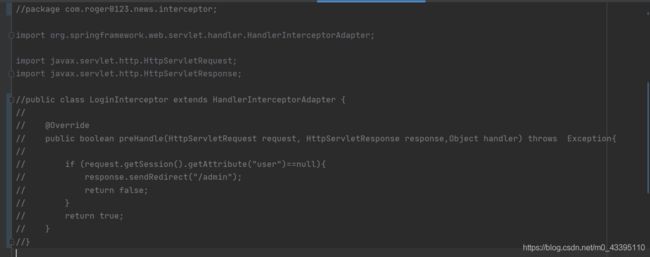

9.修改LoginController类中的login方法;
LoginController类中的login方法中添加:
@PostMapping("/login")
public String login(@RequestParam String username, @RequestParam String password,
HttpSession session, RedirectAttributes attributes){
// User user = userService.checkUsers(username,password);
// if(user!=null){
// user.setPassword(null);
// session.setAttribute("user",user);
// return "admin/index";
// }else {
// attributes.addFlashAttribute("message","用户名或密码错误");
// return "redirect:/admin";
// }
try{
//构造登录令牌
UsernamePasswordToken upToken = new UsernamePasswordToken(username,password);
//获取subject
Subject subject = SecurityUtils.getSubject();
subject.login(upToken);
User user = (User) subject.getPrincipal();
session.setAttribute("user",user);
return "admin/index";
}catch (Exception e){
attributes.addFlashAttribute("message","用户名或密码错误");
return "redirect:/admin";
}
}
Test
1.输入错误的密码,登录失败;

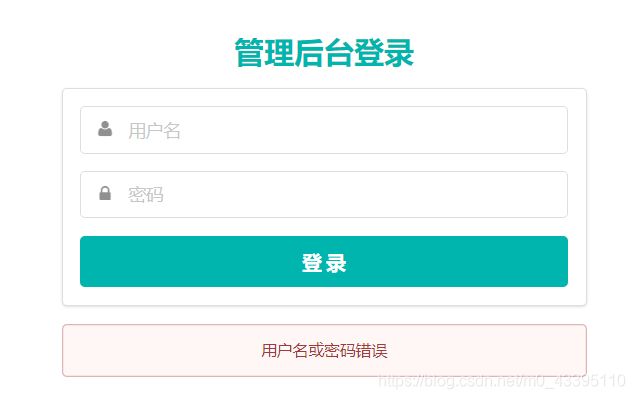
2.不登录尝试直接输入地址跳转,跳转失败,返回登录界面,即登录拦截成功;
![]()
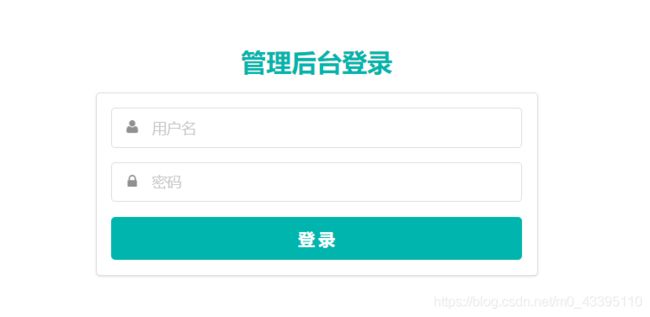
Filter过滤器类型:


权限管理
1.数据库中如下表中事先插入测试数据;
t_user:

t_role:

t_permission:
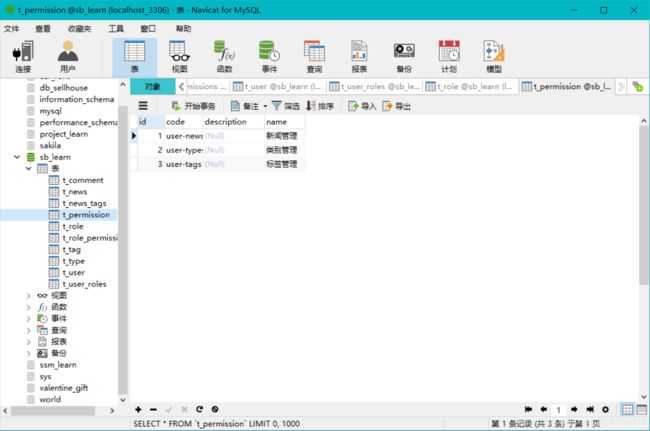
t_role_permissions:

t_user_roles:
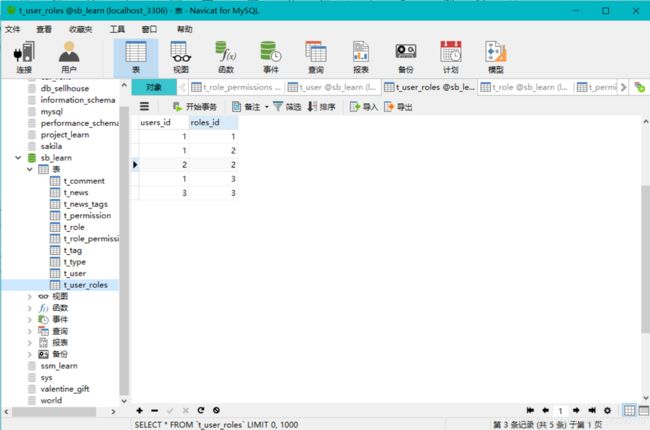
2.修改ShiroConfiguration类中的shiroFilterFactoryBean方法;
shiroFilterFactoryBean方法中添加:
//配置shiro过滤工厂
@Bean
public ShiroFilterFactoryBean shiroFilterFactoryBean(SecurityManager securityManager){
ShiroFilterFactoryBean shiroFilterFactory = new ShiroFilterFactoryBean();
shiroFilterFactory.setSecurityManager(securityManager);
//通用配置
shiroFilterFactory.setLoginUrl("/admin");
shiroFilterFactory.setUnauthorizedUrl("/admin");//未授权
/*
* key: 请求路径
* value: 过滤器类型
*/
Map<String ,String > filterMap = new LinkedHashMap<>();
filterMap.put("/admin/news","perms[user-news]");
filterMap.put("/admin/types","perms[user-types]");
filterMap.put("/admin/tags","perms[user-tags]");
filterMap.put("/admin/login","anon");
filterMap.put("/admin/**","authc");
//设置过滤器
shiroFilterFactory.setFilterChainDefinitionMap(filterMap);
return shiroFilterFactory;
}
Test
1.全权限管理登录(新闻编辑+分类管理+标签管理);
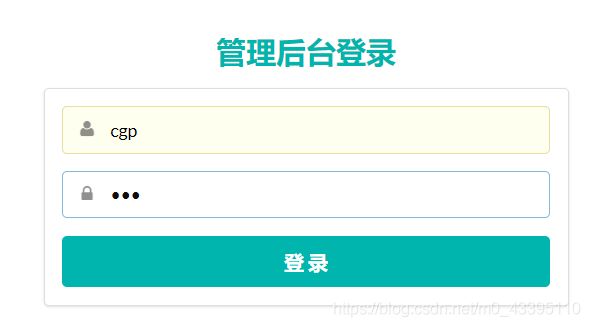
新闻、分类、标签均跳转无误;



2.分类权限管理登录(分类管理);
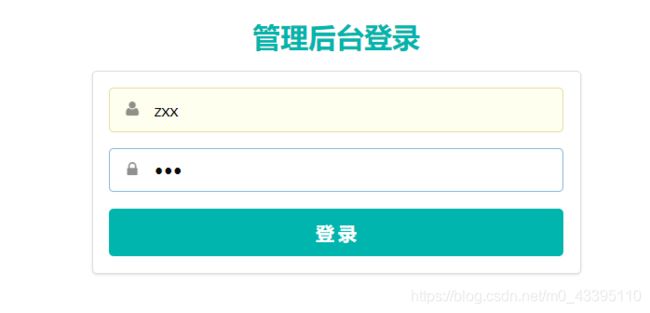
分类跳转无误,新闻、标签则跳转至登录页面;
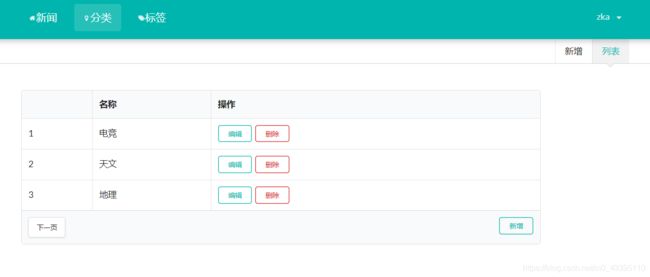

3.标签权限管理登录(标签管理);

标签跳转无误,新闻、分类则跳转至登录页面;


微服务(Spring Cloud)
组件:
Eureka:服务治理组件,包含了服务注册中心,服务注册与发现机制的实现;
Zuul:网关组件;
Ribbon:负载均衡;
Feign:服务调用;
Hystrix:容错管理组件;
Provider Module
1.IDEA创建provider Module(Spring Cloud)步骤如下;
File→New→Module…

→Spring Initializr→Next

→修改Group、Artifact、Java Version→Next

→选择如下依赖→Next
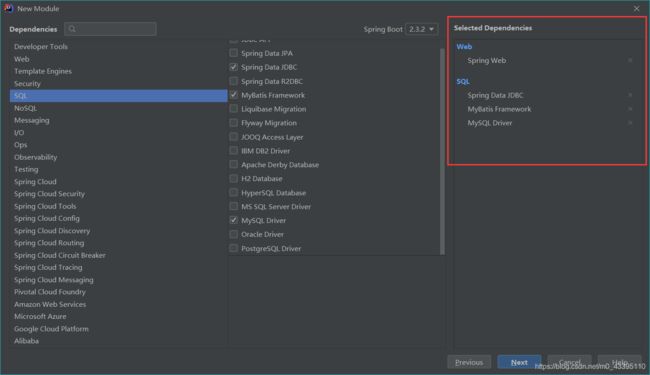
项目上级目录新建一个scloud文件夹,并修改root、location如下;
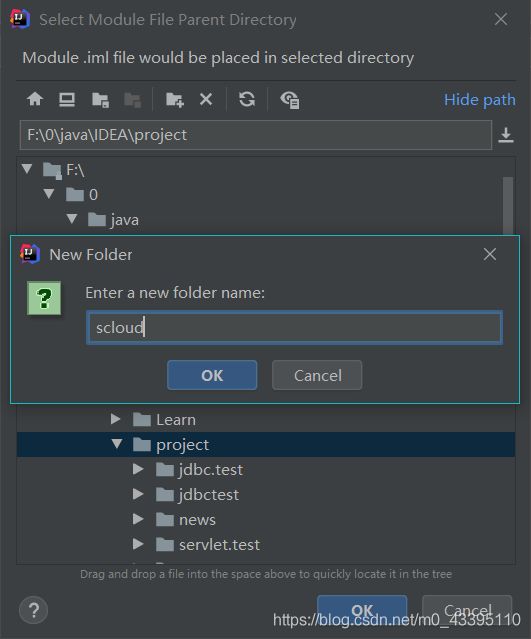
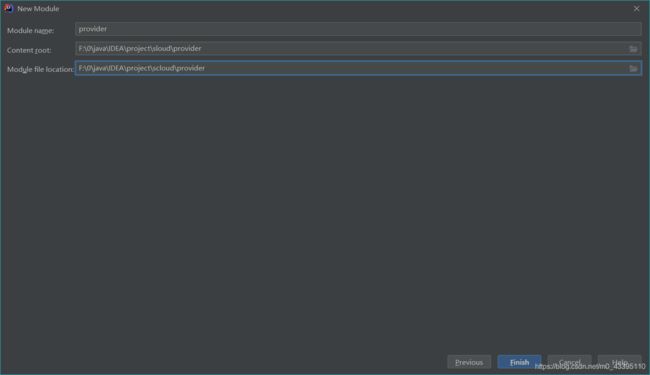
创建成功如下;
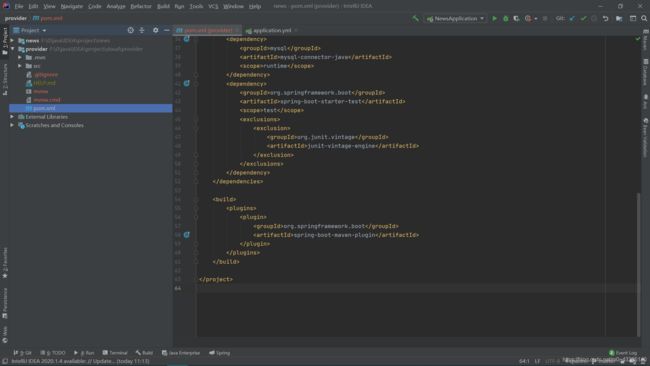
2.修改pom.xml文件;
pom.xml中添加:
<dependency>
<groupId>tk.mybatis</groupId>
<artifactId>mapper-spring-boot-starter</artifactId>
<version>2.0.4</version>
</dependency>
3.创建如下包结构,并修改application.properties文件为application.yml文件;
4.po下创建User实体类;

User中添加:
@Table(name = "tb_user")
public class User implements Serializable {
private static final long serialVersionUID = -1203619350515120953L;
@Id
@GeneratedValue(strategy = GenerationType.IDENTITY)
private Long id;
private String username;
private String password;
private String name;
private Integer age;
private Integer sex;
private Date birthday;
private Date created;
private Date updated;
public static long getSerialVersionUID() {
return serialVersionUID;
}
public Long getId() {
return id;
}
public void setId(Long id) {
this.id = id;
}
public String getUsername() {
return username;
}
public void setUsername(String username) {
this.username = username;
}
public String getPassword() {
return password;
}
public void setPassword(String password) {
this.password = password;
}
public String getName() {
return name;
}
public void setName(String name) {
this.name = name;
}
public Integer getAge() {
return age;
}
public void setAge(Integer age) {
this.age = age;
}
public Integer getSex() {
return sex;
}
public void setSex(Integer sex) {
this.sex = sex;
}
public Date getBirthday() {
return birthday;
}
public void setBirthday(Date birthday) {
this.birthday = birthday;
}
public Date getCreated() {
return created;
}
public void setCreated(Date created) {
this.created = created;
}
public Date getUpdated() {
return updated;
}
public void setUpdated(Date updated) {
this.updated = updated;
}
@Override
public String toString() {
return "User{" +
"id=" + id +
", username='" + username + '\'' +
", password='" + password + '\'' +
", name='" + name + '\'' +
", age=" + age +
", sex=" + sex +
", birthday=" + birthday +
", created=" + created +
", updated=" + updated +
'}';
}
}
5.创建数据库sp_learn并在其中创建表tb_user以及插入一条测试数据;


6.mapper下创建UserMapper接口;

UserMapper中添加:
@org.apache.ibatis.annotations.Mapper
public interface UserMapper extends Mapper<User> {
}
7.service下创建UserService类;

UserService中添加:
@Service
public class UserService {
@Autowired(required = false)
private UserMapper userMapper;
public User queryById(Long id){
return this.userMapper.selectByPrimaryKey(id);
}
}
8.controller下创建UserController类;
UserController中添加:
@RestController
@RequestMapping("user")
public class UserController {
@Autowired
private UserService userService;
@GetMapping("{id}")
public User queryById(@PathVariable("id") Long id){
return this.userService.queryById(id);
}
}
9.修改application.yml文件;
application.yml中添加:
server:
port: 8081
spring:
datasource:
url: jdbc:mysql://localhost:3306/sp_learn?useSSl=true&characterEncoding=utf8&serverTimezone=Asia/Shanghai
username: root
password: ******
driver-class-name: com.mysql.cj.jdbc.Driver
mybatis:
type-aliases-package: com.roger.service.provider.po
Consumer Module
1.创建consumer Module;



2.创建如下包结构,并修改application.properties文件为application.yml文件;
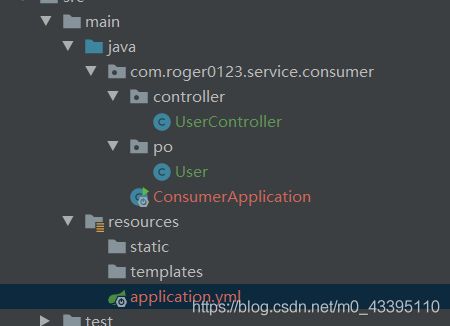
修改application.yml文件;
application.yml中添加:
server:
port: 80
public class User implements Serializable {
private static final long serialVersionUID = -1203619350515120953L;
private Long id;
private String username;
private String password;
private String name;
private Integer age;
private Integer sex;
private Date birthday;
private Date created;
private Date updated;
public static long getSerialVersionUID() {
return serialVersionUID;
}
public Long getId() {
return id;
}
public void setId(Long id) {
this.id = id;
}
public String getUsername() {
return username;
}
public void setUsername(String username) {
this.username = username;
}
public String getPassword() {
return password;
}
public void setPassword(String password) {
this.password = password;
}
public String getName() {
return name;
}
public void setName(String name) {
this.name = name;
}
public Integer getAge() {
return age;
}
public void setAge(Integer age) {
this.age = age;
}
public Integer getSex() {
return sex;
}
public void setSex(Integer sex) {
this.sex = sex;
}
public Date getBirthday() {
return birthday;
}
public void setBirthday(Date birthday) {
this.birthday = birthday;
}
public Date getCreated() {
return created;
}
public void setCreated(Date created) {
this.created = created;
}
public Date getUpdated() {
return updated;
}
public void setUpdated(Date updated) {
this.updated = updated;
}
@Override
public String toString() {
return "User{" +
"id=" + id +
", username='" + username + '\'' +
", password='" + password + '\'' +
", name='" + name + '\'' +
", age=" + age +
", sex=" + sex +
", birthday=" + birthday +
", created=" + created +
", updated=" + updated +
'}';
}
}
4.controller下创建UserController类;

UserControlle中添加:
@Controller
@RequestMapping("consumer/user")
public class UserController {
@Autowired
private RestTemplate restTemplate;
@GetMapping
@ResponseBody
public User queryById(@RequestParam("id") Long id){
User user = this.restTemplate.getForObject("http://localhost:8081/user/"+id,User.class);
return user;
}
}
5.修改ConsumerApplication类;
ConsumerApplicatione中添加:
//注册RestTemplate
@Bean
public RestTemplate restTemplate(){
return new RestTemplate();
}
EurekaServer

1.创建eureka Module;



2.修改application.properties文件为application.yml文件,并在其中添加;
application.yml中添加:
server:
port: 10086
spring:
application:
name: eureka-server #应用名称,会在Eureka中显示
eureka:
client:
service-url: #eurekaServer地址,现在是自己的地址,如果是集群,需要加上其他server地址
defaultZone: http://localhost:${
server.port}/eureka
3.修改EurekaApplication类添加一个声明;

EurekaApplication中添加:
@EnableEurekaServer //声明当前springboot应用是一个eureka服务中心
Test
启动EurekaApplication;

进入Eureka管理页面,注册服务成功;
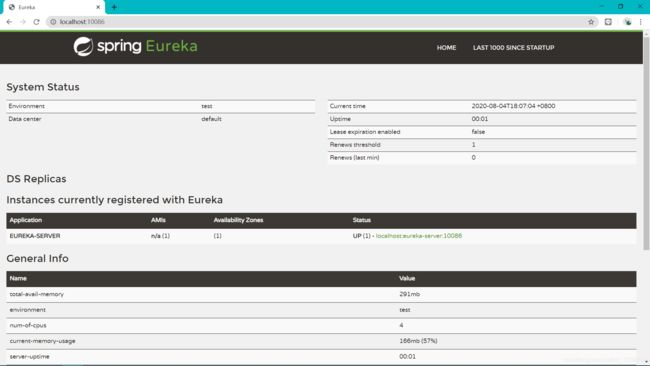
4.provider Module中修改pom.xml文件;
pom.xml中添加:

<!-- Eureka客户端 -->
<dependency>
<groupId>org.springframework.cloud</groupId>
<artifactId>spring-cloud-starter-netflix-eureka-client</artifactId>
</dependency>
<dependencyManagement>
<dependencies>
<dependency>
<groupId>org.springframework.cloud</groupId>
<artifactId>spring-cloud-dependencies</artifactId>
<version>Hoxton.SR6</version>
<type>pom</type>
<scope>import</scope>
</dependency>
</dependencies>
</dependencyManagement>
5.provider Module中修改application.yml文件;
application.yml中添加:

application:
name: service-provider #应用名称,注册到eureka后的服务名称
eureka:
client:
service-url: #EurekaServer 地址
defaultZone: http://localhost:10086/eureka
6.修改ProviderApplication类添加一个声明;

ProviderApplication中添加:
@EnableEurekaClient
Test
启动ProviderApplication;

再次进入Eureka管理界面,新增注册provider服务成功;







